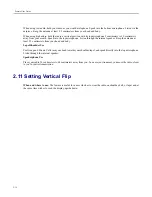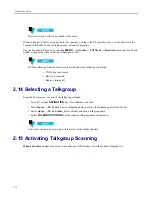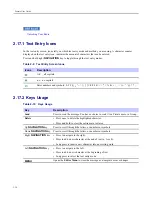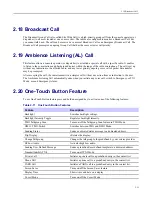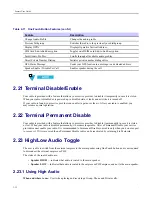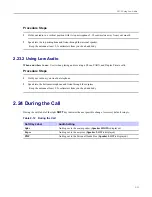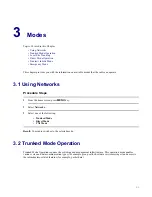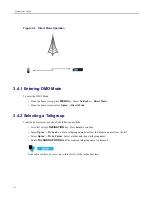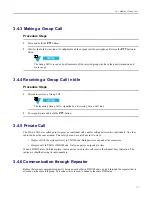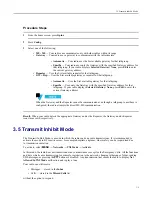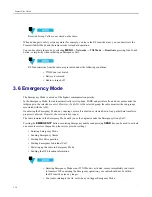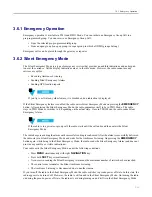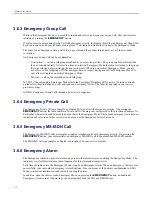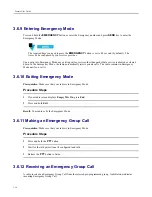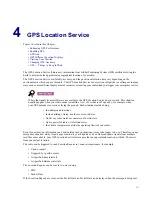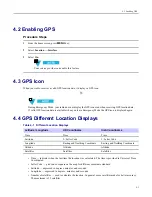
Feature User Guide
3.2.7 DGNA Reception
3.2.8 DGNA Auto Select Group
If the DGNA Auto Select is configured, whenever your radio receives a DGNA, it switches to the added talkgroup.
3.2.9 Viewing DGNA Talkgroups
Prerequisites:
Your radio receives the DGNA message.
Procedure Steps
1
To view the added talkgroups details press
View
.
2
Scroll through the list to select required talkgroup.
3
To select the DGNA group, press
Attach
.
3.2.10 Phone and PABX Calls
The Phone Call allows you to call a landline telephone number or a cellular mobile phone number. The Private
Automatic Branch Exchange (PABX) Call allows you to call local (office) extension numbers.
3.2.11 Private Call
The Private Call, also called point-to-point, or individual call, enables calling between two individuals. No other
radio can hear the conversation. This call type can be carried out in two ways:
• Duplex call (if the system allows), in TMO Mode. Both parties can speak at the same time.
• Simplex call, in TMO or DMO Mode. Only one party can speak at a time.
When a DMO Private Call takes place, radios not involved in this call receive the channel busy indication. The
radios are identified using its radio numbers.
3.3 Local Site Trunking
This mode is also called as Fallback Mode and it allows more than one radio from the same site to communicate
when the link between the site and the network central controller fails. Entering and exiting Local Site Trunking
(that is, returning to System Wide Services) is done automatically. In this mode some services are unavailable.
Your service provider can disable this mode.
3-4
-



